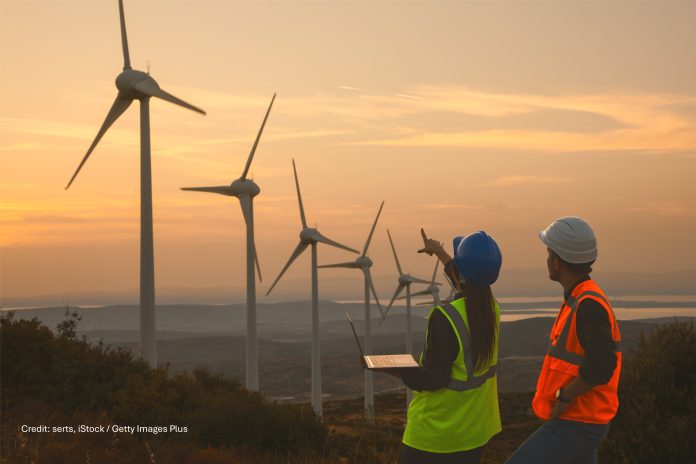The International Renewable Energy Agency (IRENA) has released its Renewable Capacity Statistics 2025 report, revealing a record-breaking surge in global renewable power capacity during 2024. The total capacity reached 4,448 gigawatts (GW), with an impressive 585 GW added last year, accounting for 92.5% of all new power capacity. This marks a 15.1% growth rate, the fastest annual increase recorded to date.
Despite this significant progress, the global transition to renewable energy is still behind pace to meet the ambitious goal of tripling installed renewable capacity by 2030. To achieve this, renewable energy expansion must accelerate to 16.6% per year moving forward—an increase beyond the current rate of growth.
In addition, progress yet again reflects significant geographic disparities. As in previous years, most of the increase occurred in Asia, with the greatest share being contributed by China—almost 64% of the global added capacity—while Central America and the Caribbean contributed the least at only 3.2%. The G7 and G20 countries respectively accounted for 14.3% and 90.3% of new capacity in 2024.
IRENA Director-General, Francesco La Camera said: “The continuous growth of renewables we witness each year is evidence that renewables are economically viable and readily deployable. Each year they keep breaking their own expansion records, but we also face the same challenges of great regional disparities and the ticking clock as the 2030 deadline is imminent.”
“With economic competitiveness and energy security being increasingly a major global concern today, expanding renewable power capacity at speed equals tapping into business opportunities and addressing energy security quickly and sustainably. I call on governments to leverage on the next round of Nationally Determined Contributions (NDCs 3.0) as an opportunity to outline a clear blueprint of their renewable energy ambitions, and on the international community to enhance collaborations in support of the ambitions of Global South’s countries,” he added.
Commenting on the remarkable progress, the United Nations Secretary-General, António Guterres, said: “Renewable energy is powering down the fossil fuel age. Record-breaking growth is creating jobs, lowering energy bills and cleaning our air. Renewables renew economies. But the shift to clean energy must be faster and fairer – with all countries given the chance to fully benefit from cheap, clean renewable power.”
Solar and wind energy continued to expand the most, jointly accounting for 96.6% of all net renewable additions in 2024. Over three-quarters of the capacity expansion was in solar energy which increased by 32.2%, reaching 1 865 GW, followed by wind energy which grew by 11.1%.
The large net decommissioning of non-renewable power in some regions has contributed to the upward trend of renewables capacity. However, more needs to be done to reach the goal of tripling renewables capacity by 2030 and the Paris Agreement. Over the past few years, IRENA has been pressing for clear, quantifiable renewable capacity targets in NDCs 3.0. To this end, the Agency has been assisting in the enhancement and implementation of its members’ NDCs with a focus on the energy sector through its country engagement.
Technology highlights:
- Solar: solar photovoltaics increased by 451.9 GW last year. China alone added 278 GW to the total expansion, followed by India (24.5 GW).
- Hydropower (excluding pumped storage hydropower): capacity reached 1 283 GW, demonstrating a notable rebound from 2023, driven by China. Ethiopia, Indonesia, Nepal Pakistan, Tanzania, and Viet Nam added more than 0.5 GW each.
- Wind: wind energy expansion declined slightly, to a total of 1 133 GW capacity by the end of 2024. Expansion was once again dominated by China and the United States (US).
- Bioenergy: expansion rebounded in 2024, with an increase of 4.6 GW of capacity compared to an increase of 3.0 GW in 2023. The growth was driven by China and France with 1.3 GW of additions each.
- Geothermal: geothermal energy increased by 0.4 GW overall, led by New Zealand, followed by Indonesia, Türkiye, and the US.
- Off-grid electricity (excluding Eurasia, Europe and North America): capacity expansion nearly tripled, growing by 1.7 GW to reach 14.3 GW. Growth was dominated by off-grid solar energy which reached 6.3 GW by 2024.

